
Characteristics
Species
Record
Weird Sea Creatures
Contact
Hammerhead Species
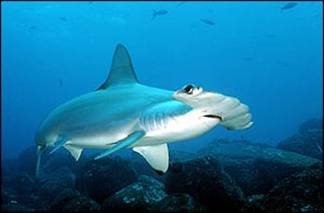
months.
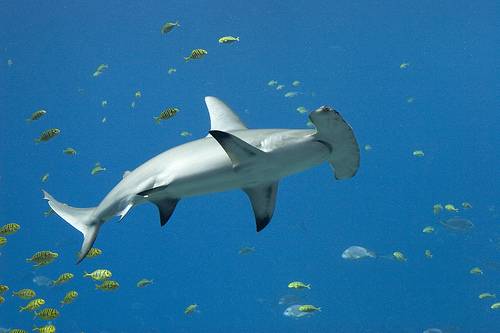
Smooth Hammerhead Shark
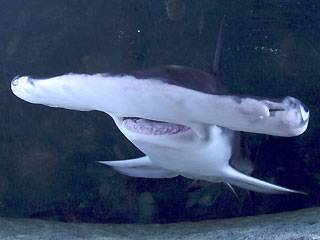
The smooth hammerhead is the only Hammerhead to appear in Canadian seas. They are distinguished by a head that lacks a middle indentation. Generally their head resembles more of an axe, rather than a mallet. They can reach lengths of 12 to 13 feet, and can weigh about 800 pounds. They feed on school fish, small sharks, shrimp, and rays. These Hammerheads are found worldwide, they prefer moderate water temperatures. Smooth Hammerheads may also often be seen in large schools. These sharks are able to tolerate cold water the most, as compared to other Hammerhead Sharks. They are viviparous and have a litter size that ranges from 29 to 37 young. Generally, the smooth hammerhead is the species that people most often see. Bonnet Head This shark is set apart from the rest of the crown, because of its relatively small head as compared to other Hammerheads. They have a broad and smooth head; their body is grayish brown with a lighter white underside. They are a small species of Hammerhead reaching about 3 to 5 feet long. They feed on crustaceans like crabs, shrimp, mollusks, and they also feed on smaller fish. Bonnet heads generally prefer warm waters of over 70 degrees. They are found in the western hemisphere, and Migrate closer to the equator during the winter. They are viviparous and produce 6 to 12 pups in one liter. They typically from groups of 5 to 15 sharks, they also travel in schools that contain hundreds of sharks. Scalloped Bonnet Head
This species is found in the tropical waters of the pacificocean, not much is known about this species, except that it resembles the bonnet head and have ridges on their head. They are very small, reaching up to only 3 feet; they are probably the smallest species of Hammerheads. They are viviparous as with other sharks , they have a small liter of just 2 pups.
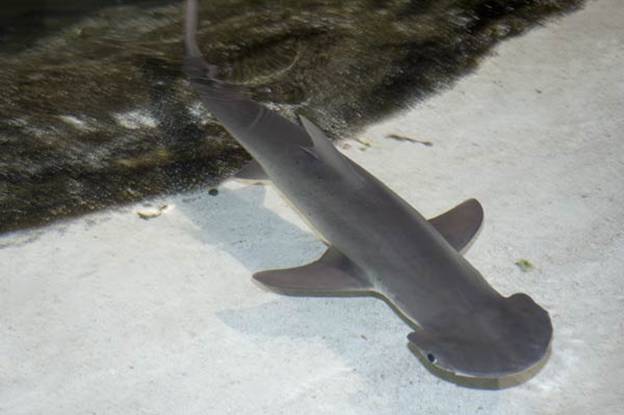
Winghead Shark
This species is so named because it has a wing shaped head. As compared to other Hammerheads, these guys really do have a ridiculously elongated head. Amazingly, the length of their head is about the enght of half their body. Unfortunately, little is known about the winghead shark. They are typically found in shallow waters, on insular and continental shelves. They are located towards the eastern hemisphere by the Indian Ocean. Wingheads feed on small fish and some invertebrates. They can reach a maximum size of six feet, and they are generally a small species of hammerhead. They are viviparous and generally produce about 6 to 25 pups per liter.
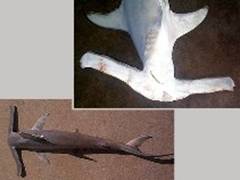
Smalleye Hammerhead
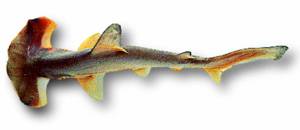
Otherwise known as the Golden Hammerhead, this species is extremely rare. They have the prominent features of most hammerheads, except for their small eyes and their dark brownish golden color. They are a very small species reaching maximum sizes of four and a half feet. They feed on small fish, soft-shelled animals, and baby sharks. They are found in the continental shelves of tropical and subtropical regions. As with other sharks they are viviparous, although not much is known about their reproduction.
ScoopHead Shark
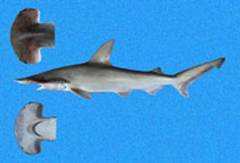
Yet another little known species, it has a broad arched mallet shaped head. This species is located in the western Atlantic Ocean, and the eastern Pacific Ocean. Typically the scoopHead shark eats small fish, and it is a relatively small shark itself. They average about 4 feet, and do not get bigger than 5 feet. These sharks are viviparous and give birth to lie young.